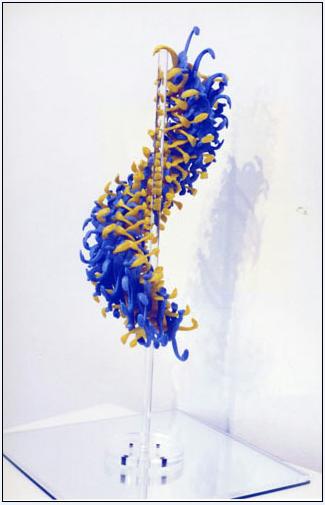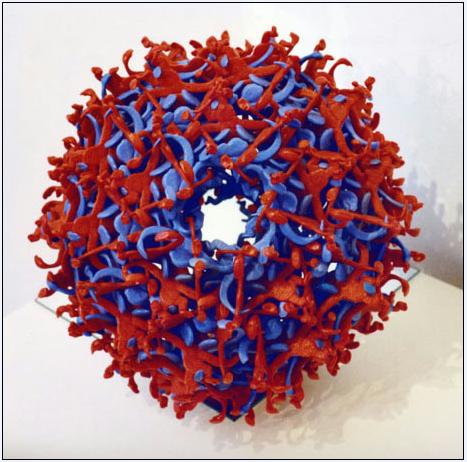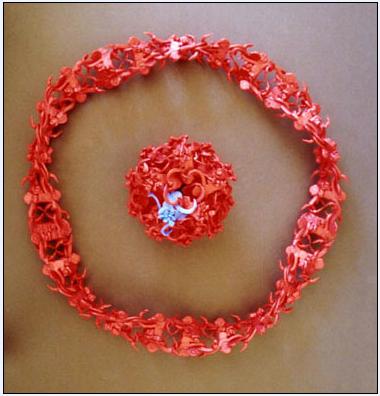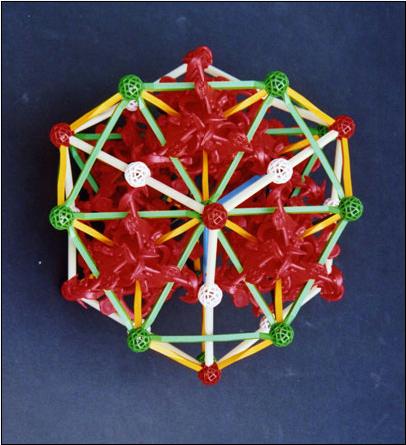N. Michael Green
"Helix 2"
6" x 6" x 15", 1978

This antiparallel double helix is formed from asymmetric pairs of blue and yellow monkeys, joined by a symmetric link between the yellow monkeys. The symmetric pairs are linked to form a helix with their twofold axes perpendicular to the helix axis.
"Simian Virus"
12" x 12" x 12", 1980

This model of a virus shell is an icosahedron. Each triangular face is assembled from three groups of six monkeys (three red and three blue joined in a trigonal ring). The links between the groups within each triangular face differ slightly from those between the faces (quasi equivalence).
"Ringed Planet"
18" x 18" x 6", 2005

The planet is a dodecahedron with a symmetric group of three monkeys at each vertex (one of these is shown in blue). The repeating unit of the ring is a group of four monkeys joined with twofold symmetry by two different links. The ring has five half twists and is thus a Mobius strip of the fifth order (a single surface).
"Tetrahedra on a Zome Lattice"
10" x 10" x 10", 2005

Tetrahedra are made from twelve symmetric pairs of monkeys and then assembled
on a face centred cubic lattice (white). It can be seen that this is equivalent
both to a diamond lattice (yellow) and to a lattice joining the centres of cubic
close-packed spheres (green), in which space is filled by alternating tetrahedra
and octahedra.
N. Michael Green
National Institute for Medical Research, London NW7 1AA, U.K.)
" Every living organism produces a variety of complex structures by self assembly of identical building blocks of one or more types. These structural units are usually protein molecules which have evolved to assemble spontaneously, using multiple weak bonds. The principles of thermodynamics ensure that the most stable links are used. The number of such links is maximised in symmetrical structures, in which all the units are identically bonded. Natural selection ensures that assemblies with useful biological properties are perpetuated. (eg. virus coats, muscle fibres, mitotic spindles, intercellular junctions and many enzymes). The geometric principles involved also apply in architecture, tiling patterns and fabric design. They may be explored 'hands on' using any asymmetric building unit. Plastic monkeys (Hasbro, 'Barrel of Monkeys') are particularly convenient since there are over eighty different ways of linking a pair of monkeys. If one or two of these links are chosen and repeated systematically, large symmetric structures are generated as shown here. "